This page will serve as a continuing resource for information about the implementation of Senate Bill 100 (Public Act 99-456), as well as resources for school leaders such as alternatives to exclusionary discipline. Please see below for a previously recorded webinar about Senate Bill 100 and check back for updates soon
- Preschool expulsions prohibited (Public Act 100-105)
- Early childhood programs receiving State funds shall prohibit expulsions.
- In-school suspension to focus on non-violent conflict resolution (Public Act 100-1035)
- Beginning with the 2018-2019 school year, an in-school suspension program may focus on promoting non-violent conflict resolution and positive interaction with other students and school personnel.
Resources
IPA Talk (Ep. 5) - Senate Bill 100 Q&A (Recorded 11/4/16)
Documents
Exclusionary Discipline FAQs
Is a school required to exhaust behavioral interventions prior to suspending a student?
SB 100 requires that prior to imposing long term suspensions (4-10 days), expulsions and disciplinary removals to alternative schools, all “appropriate and available behavioral interventions” must be exhausted. By law, school authorities retain the ability to determine what behavioral interventions are appropriate and available on a case-by-case basis. Short term suspensions (1-3 days) do not require school authorities to exhaust behavioral interventions.
What does it mean for a student’s continued presence at school to be a disruption or safety concern?
SB 100 requires that prior to removal, school authorities must show that a student’s “continued presence at school” would be a disruption or a safety concern. (Note that the exact definition of disruption and safety concern is slightly different for short term and long term removals.) The new law also provides that student disciplinary removals are meant for the most serious student conduct.
We offer the following to assist you in determining if a student’s continued presence at school is a disruption or safety concern that justifies a disciplinary removal from school:
- The law gives school authorities the ability to determine what it means for a student’s continued presence at school to constitute a disruption or safety concern. It is critical that school authorities use good judgment in making this decision and clearly document the rationale for their decision. Courts will generally uphold decisions of school authorities as long as all rules and procedures were followed and the decision of school authorities was reasonable under the circumstances.
- There are some infractions that are so severe and egregious – like selling drugs at school or attempting to use a weapon a school – that it may justify a finding by school authorities that the student’s continued presence at school is a safety concern or disruption, even in the case of a offense. In these cases, school authorities should take extra care to clearly document the severity of the student conduct and why a student should be removed from school.
- There are cases where a pattern of student misconduct may justify a student’s removal. In these cases, school authorities must clearly delineate how the culmination of multiple infractions are disruptive or a safety concern.
- If school authorities are unable to clearly and definitively document how a student’s continued presence at school will be a disruption or safety concern, non-exclusionary discipline must be considered.
How should school authorities document a rationale for the duration of the suspension?
SB 100 mandates that school authorities provide “a rationale as to the “specific duration” of a suspension, expulsion or disciplinary removal to an alternative school. This is, perhaps, one of the most difficult requirements of SB 100. In meeting this requirement, school authorities should be prepared to provide a rationale for the category of disciplinary removal: short term suspension, long-term suspension or expulsion. It is not necessary to rationalize the exact number of days a student is removed from school.
For example, if a 2-day suspension is found to be appropriate, school authorities should provide a rationale as to why a short-term suspension is justified. It is unwise, if not impossible, to try to rationalize why a 2-day suspension is justified as opposed to a 1-day or a 3-day suspension.
Does SB 100 change the requirements for in-school suspensions?
Generally speaking, SB 100 does not change the requirements for imposing in-school suspensions. However, as a result of SB 100, some school districts (by district policy) now require in-school suspensions to be supervised by a licensed staff member. Consult your school district’s policy manual on this matter.
How does SB 100 apply to students with an IEP or 504 plan?
SB 100 supplements the due process requirements for students with an IEP or 504 plan. School authorities must follow both disability laws and SB 100 when disciplining a student with an IEP or 504 plan.
For IEP and 504 students who are suspended, does SB 100 require support services during the suspension?
SB 100 requires that “students who are suspended for longer than 4 days shall be provided appropriate and available support services during the period of their suspension.” For a student with disabilities, appropriate support services are typically delineated in the student’s IEP or 504 plan. Therefore, school authorities must determine if it is reasonable for the student to receive these services during removal.
For example, a student may receive 60 minutes of speech each week. Clearly, these are the support services that are appropriate. School authorities must, however, still determine if such services are reasonably available to the student during a disciplinary removal. It may be possible to argue that although such services have been deemed appropriate, they are not available during the suspension because the student is not allowed on school property during the suspension and it is not feasible for the school to provide speech services off-campus.
Note, schools should continue to follow the requirements of the Individuals Disabilities Education Act (IDEA) in cases where an IEP student is suspended for a total number of days (usually 10) that constitutes a change in placement.
For IEP and 504 students, what does it mean to exhaust all appropriate and available behavioral interventions before imposing a suspension?
SB 100 requires that prior to imposing long term suspensions (4-10 days), expulsions and disciplinary removals to alternative schools, all “appropriate and available behavioral interventions” must be exhausted. By law, school authorities retain the ability to determine what behavioral interventions are appropriate and available on a case-by-case basis. For students with disabilities, the IEP or 504 plan often spell out appropriate and available behavioral interventions. In the case where interventions are specified in the IEP or 504 plan, school authorities will be under increased scrutiny to exhaust such interventions prior to imposing exclusionary discipline.
Is the school board required to approve a student suspension?
As a result of SB 100, the student suspension law now states that the “board shall, in its written suspension decision, detail the specific act of gross disobedience or misconduct resulting in the decision to suspend.” However, this language appears to modify the procedure for when a parent/student requests the board to review a suspension. Additionally, language in the suspension law (that was in existence prior to SB 100) allows the board to delegate to certain school authorities the ability to suspend students from school for up to 10 days. Therefore, we are of the opinion that the board is not required to approve student suspensions.
Can schools charge a student for damaged property or for replacement of lost items?
SB 100 provides that “a student may not be issued a monetary fee as a disciplinary consequence.” However, the law goes on to provide that this language does not prevent schools from seeking restitution for “lost, stolen, or damaged property.”
Are students allowed to make up work missed because of a suspension from school?
SB 100 provides that a “school district shall create a policy by which suspended pupils, including pupils suspended from the bus who do not have alternative transportation from school, shall have the opportunity to make up work for equivalent academic credit.” This language gives school districts broad authority to develop a policy on this matter.
How do school authorities know if a student suspended from the bus does not have alternative transportation to school?
SB 100 provides that it is the responsibility of a “pupil’s parent or guardian to notify school authorities that a pupil suspended from the school bus does not have alternative transportation to school.”
How does a student suspension and the ability to make-up work impact driver’s education?
By law, a high school’s driver education course must consist of 30 clock hours of classroom and 6 hours of behind-the-wheel training by a driver education instructor. SB 100 requires schools to give students an opportunity to make-up work missed for equivalent academic credit. If a student is suspended multiple times and the suspensions keep the student from completing the 30 clock hours of classroom instruction, the question arises as to whether the student must be given the opportunity to make up the instruction missed during the suspension. Under the law, the answer to this question is unclear and will ultimately need to be determined by a court. Please consult your school district’s attorney should this situation arise.
When does SB 100 go into effect?
SB 100 will generally go into effect at the beginning of the 2016-17 school year, but in no case later than September 15, 2016.
Does SB 100 regulate all schools or just public schools?
SB 100 applies to and regulates all public schools, including charter schools. Private and parochial schools are not impacted by SB 100.
What is the standard for imposing exclusionary disciplinary?
SB 100 allows for exclusionary discipline for acts of gross disobedience or misconduct. Additionally, for a short term suspension (1-3 days) the student’s continued presence at school must constitute a threat to school safety or to other students’ learning opportunities. For long term suspensions (4-10 days), expulsions and disciplinary removals to alternative schools, a student’s continuing presence at school must constitute a threat to the safety of other students, staff or the school community or substantially disrupt, impede, or interfere with the operation of the school.
Who decides if a student’s actions constitute a threat or disruption for which exclusionary disciplinary can be imposed?
School officials determine if a student’s conduct constitutes a threat or disruption. Keep in mind, however, a school official’s decision is reviewable by the school board and potentially a court of law.
Does SB 100 apply to disciplinary removals to alternative schools?
Yes. SB 100 requirements apply to disciplinary removals to alternative schools.
Does SB 100 apply to in-school suspensions?
No.
Does SB 100 address a student’s ability to make up work after a suspension?
Yes. SB 100 provides that a student must be provided a reasonable opportunity to make up all missed work for equivalent (full) academic credit.
What constitutes a reasonable opportunity to make up missed work for equivalent academic credit?
School officials can, through policy, determine what constitutes a reasonable opportunity to make up work for equivalent academic credit. All students should be treated the same in terms of an opportunity to make up work for equivalent academic credit.
Can students be issued a monetary fine as a disciplinary penalty?
No. SB 100 specifically states that students may not be issued a monetary fine as a disciplinary consequence.
Can students be required to pay for damages or make restitution?
Yes. Students may be required to pay damages or make restitution for lost, stolen or damaged property.
Are truancy tickets now illegal under SB 100?
No. Truancy tickets are issued by law enforcement and are not subject to SB 100.
What are examples of non-exclusionary discipline?
Examples include, but are not limited to, in-school suspension, detention, removal of student privileges and all other disciplinary consequences that do not remove a student from school.
If a student is removed from bus transportation, must the student be given an opportunity to make up missed work?
If a student does not have alternative transportation and the student’s parent/guardian so notifies the school, the student must be given a reasonable opportunity to make up work for equivalent academic credit.
How does SB 100 apply to cumulative discipline?
Cumulative exclusionary discipline must still comply with SB 100. Hence, the student’s conduct or the totality of the student’s conduct would need to constitute a safety concern or disruption in accordance with SB 100 in order to impose exclusionary discipline.
Are interventions required before a student can be removed from school for disciplinary reasons?
Out-of-school suspension of longer than 3 days, expulsions and disciplinary removals to alternative schools may only be used if appropriate and available behavioral and disciplinary interventions have been exhausted.
Who determines whether or not interventions are available and appropriate?
School officials determine if interventions are appropriate and available.
What are examples of behavioral and disciplinary interventions?
Examples of behavioral and disciplinary interventions include but are not limited to any previous correspondence with parents or guardians about the behavior, check-in/check-out, functional behavioral analysis (FIB), behavioral improvement plan (BIP), social academic instructional group (SAIG), in-school suspension, out-of-school suspension and/or other interventions and resources.)
Are support services required during the term of the student’s suspension?
Students who out-of-school for longer than 4 days must be provided with appropriate and available support services during the period of suspension.
Who determines whether or not support services are available and appropriate?
School officials determine if support services are appropriate and available.
What are examples of support services?
Examples include, but are not limited to, counseling and academic support services.
Are schools required to provide re-engagement strategies for students who return to school after exclusionary discipline?
School districts are required to create a policy to facilitate the re-engagement of students who out-of-school, expelled or returning from an alternative setting. Please see your school district's policy on student re-engagement.
More Resources






 Aspiring
Aspiring Launching
Launching Building
Building Mastering
Mastering





 IPA Members Only
IPA Members Only